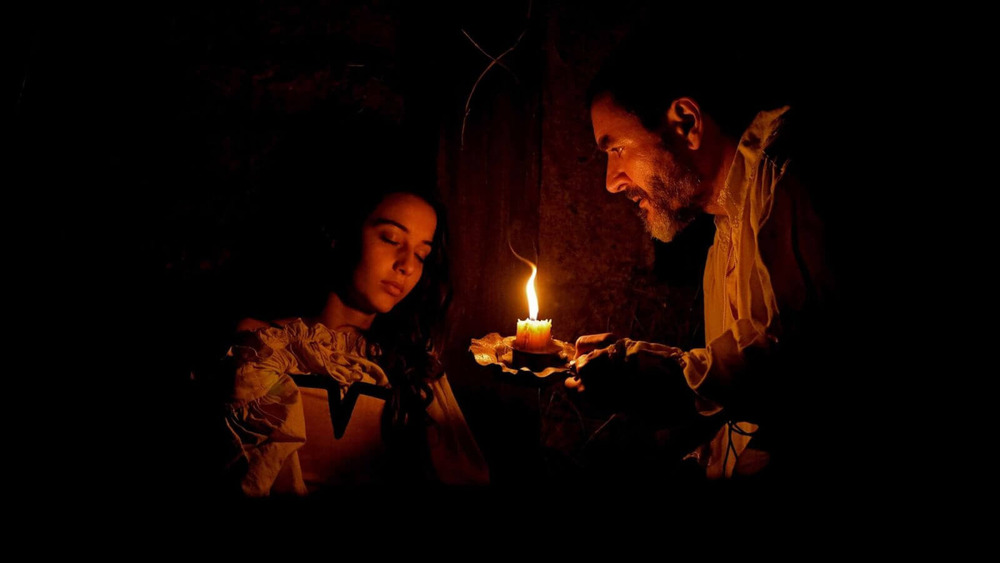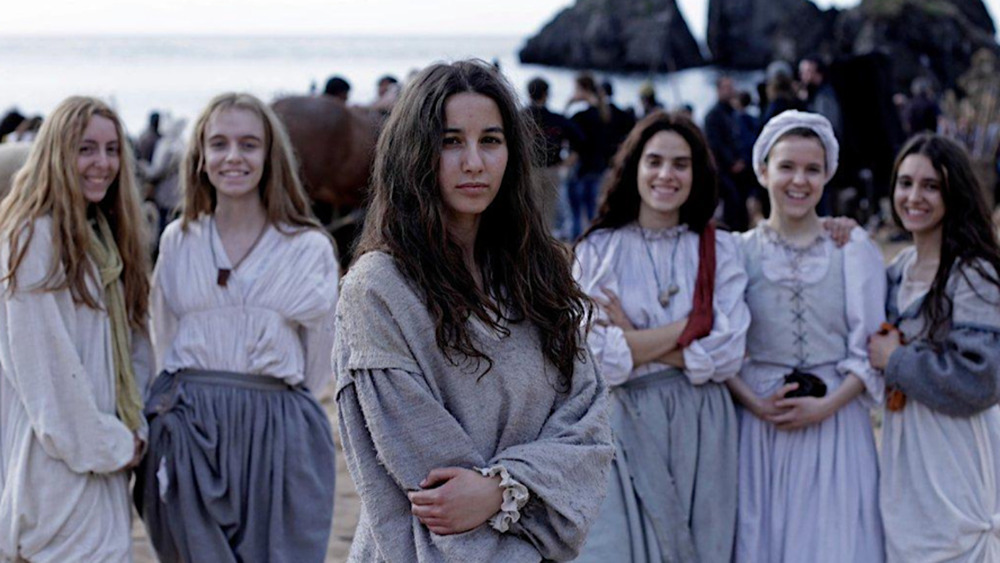The Ending Of Coven Of Sisters Explained
People like to talk about the prevalence of zombies and vampires in media. There's this perception that these mystical beings are more used than any other in the universe. But let's consider another group for a moment — witches.
Maybe you were too busy thinking about the fact that there are three The Walking Dead TV shows to notice, but witches are absolutely omnipresent at this point. What started it? Who can say, but somewhere between Melisandre (Carice van Houten) on Game of Thrones and the absolutely massive success of the art-house horror movie The Witch, witches are straight-up everywhere.
Think about it for a moment: Charmed is back, The Craft got a surprise continuation, and Roald Dahl's The Witches got a new adaptation. There's also Discovery of Witches, Motherland: Fort Salem, The Order, Gretel and Hansel, and countless other examples. Heck, arguably the most talked-about television show of 2021 so far, WandaVision, ended with the confirmation that Wanda Maximoff (Elizabeth Olsen) is, in fact, the Scarlet Witch.
On Netflix, we recently saw the end of the popular witch series The Chilling Adventures of Sabrina, but that doesn't mean there are no more witch stories to be told in the land of the big, red "N." In point of fact, there's a brand-new Spanish drama which recently dropped called Coven of Sisters, and you'll never guess what it's about. Let's talk about this latest entry into the pantheon of witch stories, where it takes us, and what its ending means.
A witch story that's about rising above oppression
Coven of Sisters (also referred to simply as Coven) is set at the start of the 17th century in Basque Country — a time when there were real-life witch burnings during the Spanish Inquisition. The short and dirty for the story's setup is this: After a night of dancing and self-celebration, a group of young women are taken in by a judge named Rostegui (Alex Brendemühl) and his entourage under suspicion of witchcraft. The girls realize they can keep the judge talking and push out their execution date until their seafaring fathers can rescue them by giving the judge exactly what he wants — stories of their satanic worship as witches.
Coven of Sisters opens with Ana (Amaia Aberasturi) and her friends talking about how they long to escape Basque Country but how women are not allowed to sail with the men. Instead, the girls fantasize and sing about transforming into birds and flying away. When Rostegui seeks to prove that the girls are in league with Satan and drawing power from him, the girls use his belief in Satan to trick Rostegui into believing they really are witches by passing their songs off as spells. In short, the real story of Coven of Sisters is one of power through community and of using that community to fight against systemic oppression.
In a way, the girls do become witches, and they draw power from Rostegui's own dark desires, making him their Satan stand-in. Coven of Sisters is a story about how the more men try to control women, the more women will find a means to subvert those attempts and take their power back. And the final moments really solidify that.
Did the girls survive? Does it matter?
Rostegui gets his Sabbath, but only because he pushes Ana and the others to it. The more he tortures them, stripping them of their clothes, their hair, and even their flesh, the more they are left with no other recourse than to become the witches Rostegui fears. Remember that neither the Spanish Inquisition nor the oppression of women were new by the 17th century. Foolishly, Rostegui puts faith in the older women under his employ, whom he thinks have been permanently beaten into submission. But they, just like the young women, also have the ability to find power through their own subjugation.
Throughout Coven of Sisters, Ana and the rest are locked away, unable to see or know what is happening in the outside world, but that's not true for the older women — they can see everything, and they've lived a long time of seeing everything. When the girls race to a cliff after performing their Sabbath and bewitching Rostegui, the older women sing their own song, with the lyrics "During the last full mon of autumn high tide and the flight of seagulls." Ana tells the girls they should jump, and they do. Rostegui stares at the empty cliff and declares, "They're flying."
Whether or not the high tide saves their lives or if they break on the rocky shoal below, we don't know for certain. But we do know that the story of Ana and her friends becoming so powerful that they turned a judge to the devil and flew away will live on forever — and it'll make other men like Rostegui think twice before telling women how to live.
Coven of Sisters is streaming now on Netflix.


